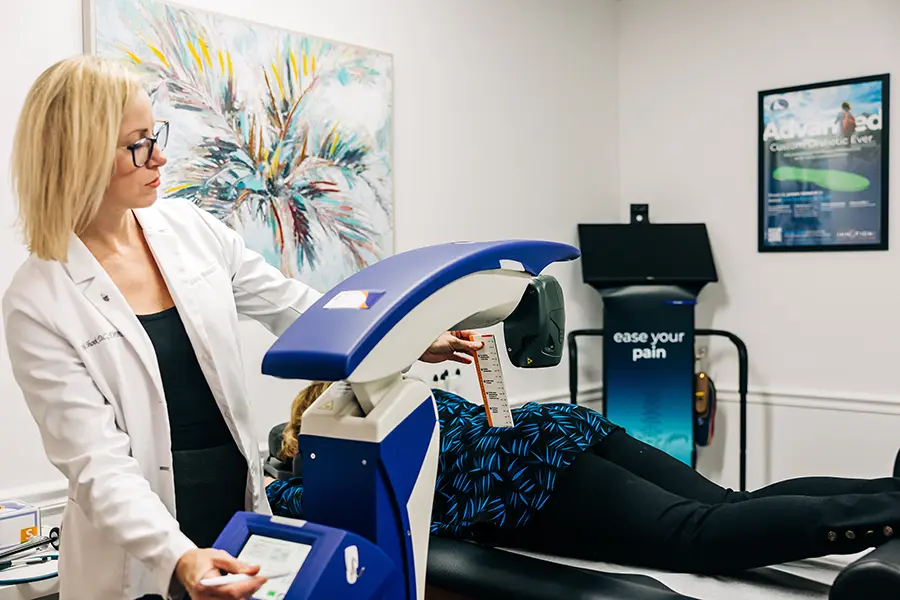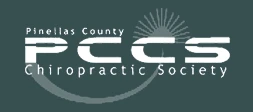Hip Pain in St Petersburg, Florida: Causes, Relief, and Treatments
Hip pain can keep you from living your life to the fullest. If you live in St Petersburg, Florida, and your hip hurts, it’s hard to walk to class at St. Pete College, shop at Tyrone Square Mall, or enjoy a relaxing stroll down Beach Drive. Hip pain can feel heavy, stabbing, or even make your whole leg ache. Sometimes the pain can even radiate up into your lower back as well. Below you’ll discover what causes hip pain, where it usually hurts, what happens when pain travels down your leg, how to find quick relief, and what you can do to treat it.
Hip pain affects many people—children, adults, athletes, and older folks. In St Petersburg’s neighborhoods, from Kenwood to Shore Acres, this problem holds back folks from enjoying parks, beaches, and community events. If you’ve felt hip pain after a hard day at work or while gardening in your yard, you are not alone.
What Causes Hip Pain?
The hip joint carries much of your upper body weight. It is a ball-and-socket joint, allowing your leg to move in many directions. It is strong, but also used every day when you walk, sit, stand, run, bend, and jump. So many things can cause hip pain, and it is helpful to know why. In general, hip pain often shows up after years of use, sudden injuries, or from standing or sitting too much.

Common Causes of Hip Pain
- Arthritis: This is the most common cause of hip pain for older adults and many middle-aged people. Osteoarthritis—arthritis from wear and tear—causes the cartilage in the hip to wear down. Cartilage keeps your bones from grinding together. Without it, you feel pain, stiffness, and swelling. Rheumatoid arthritis is another form, which can also affect younger folks.
- Hip Fractures: Sometimes, falling at home or slipping while running errands causes the hip bone to break. Fractures are very risky for older adults but can happen to anyone in a car accident, sports, or a bad fall. Fractures make walking, standing, even sitting very painful. And like any bone fracture, these need emergency care.
- Labral Tears: The hip socket is covered by a ring of cartilage called the labrum. If this tears—from twisting, running, slipping, or sports—the hip will often click, lock, or feel sharp pain when moving. The pain may feel deep inside the hip or close to the groin.
- Bursitis: If the small, jelly-like sacs that cushion your bones get irritated or inflamed, you get bursitis. Most people feel bursitis pain on the outer side of the hip—especially when lying on it at night or walking.
- Tendinitis: Tendons are like ropes that attach muscles to bone. If your hip tendons are overworked—maybe from walking long distances in Vinoy Park, biking, or sports—they get swollen and hurt. Rest, ice, and gentle stretching often helps.
- Muscle Strains: Overdoing it at the gym or too much yard work on the weekend can cause hip muscle strains. They feel sore, tight, or throbbing and usually improve with rest, ice, heat, and light movement.
- Pinched Nerves and Sciatica: Sometimes hip pain comes not from the hip, but from pinched nerves in the lower back. This pain feels sharp, burning, or shooting and can travel to the thigh, leg, or foot.
- Avascular Necrosis: This is when blood supply to the hip bone is blocked, so bone tissue dies. It causes lots of pain, stiffness, and usually comes after an injury or from certain health issues.
- Hip Impingement: Some people are born with abnormal shapes in their hip joint. Movement squeezes soft tissue, causing pain and blocking the hip from moving well.
- Hip Dysplasia: The hip socket doesn’t fully cover the ball portion of the joint. This is mostly seen in babies and young kids but can show up in teens and adults.
- Sports Injuries: Soccer, football, running, and dance can cause many types of hip injuries. Younger folks in St Petersburg who are very active in sporting events can experience strains or other injuries that can cause hip pain.
- Infections: Sometimes a joint can get infected, causing swelling, redness, and sometimes a fever. This is rare but more serious. See a doctor immediately if you experience these symptoms.
- Dehydration and Overuse: Not drinking enough water, or pushing your body too hard in the Florida heat, can lead to joint stiffness and pain.
Where is Hip Flexor Pain Felt?
The hip flexors are muscles in the front of your hip that help lift your legs, bring your thighs forward, or let you bend at the hip. These muscles get strained, especially after a long bike ride on the Pinellas Trail, running downtown, or sitting for many hours at the office.
How Hip Flexor Pain Feels
- Front of the hip or in the groin area
- Sometimes spreads to the top of the thigh
- Tight, aching, or pulling feeling in the front hip
- Sharp pain with movement, like walking, climbing stairs, or getting in/out of a car
- Can feel like the muscles “catch” when moving fast
Hip flexor pain is easy to confuse with groin pain. Both hurt in the same place. Many people don’t notice pain until they try to run, stretch, or lift something heavy.
People who sit for a long time report hip flexor tightness a lot. Bending, squatting, or walking may hurt more when the hip flexors are strained.
Who Gets Hip Flexor Pain?
- Athletes (soccer, running, tennis)
- Dancers
- Cyclists
- Office workers
- Older adults0
- Anyone who sits for long periods
What Causes Hip Pain That Radiates Down the Leg?
Hip pain often travels. Many people feel pain moving from the hip through the buttock, thigh, and even down to the foot.
Main Causes of Radiating Hip Pain
- Sciatica: The sciatic nerve travels from the lower back, through the hips, and down each leg. When this nerve is pinched by a herniated disc, bone spur, or muscle, pain radiates from the hip to the buttock and down the leg. Sciatica pain is sharp, burning, and sometimes comes with numbness or tingling.
- Hip Bursitis: Pain from bursitis may start at the outer hip but spread down the side of the leg. It’s usually a dull ache that gets worse after moving, walking, or standing for a long time.
- Arthritis: Swollen hip joints can make pain run down the thigh, knee, or lower leg. Some report aching in the feet after bad flare-ups.
- Piriformis syndrome: The piriformis is a deep muscle in the buttock. If it squeezes the sciatic nerve, pain can run down the leg like in sciatica.
- Herniated disc: When a disc between the bones of the spine bulges or breaks, it can pinch nerves. Pain starts in the back or hip but shoots all the way down the leg.
- Sacroiliac Joint Problems: The joint where your spine meets your pelvis. Trouble here sends pain down the back of the thigh.
If hip pain is spreading or causing numbness/tingling in the thigh, knee, or foot, it’s time to talk to a doctor. These symptoms might mean nerve trouble and can be serious.

What Is the Fastest Way to Relieve Hip Pain?
There are ways to feel better quickly. While there’s no “magic” fix, some things work better than others.
Quick Relief Tips
- Painkillers: Ibuprofen or acetaminophen can lower pain and swelling. Always check with a doctor, especially if you have other health problems or take other medicines.
- Ice: Place an ice pack or frozen towel on the hurting spot for 10–15min three times a day. Ice shrinks swelling and numbs the area.
- Heat: A heating pad or warm towel relaxes muscles. Use heat after swelling has gone down. Never sleep with a heating pad.
- Gentle Movement: Avoid long periods of sitting. Get up and walk around your house or yard—short and slow is fine at first.
- Stretching: Light hip stretches often help with tightness. Try pulling your knee to your chest while lying down, or gentle yoga stretches.
- Massage: A gentle rub can loosen tight muscles and help pain. Use your finger tips or a soft massage ball.
- Rest: Take breaks when your hip hurts. Don’t force walks or activities that make the pain worse.
When to See a Doctor
If the pain is very sharp, you can’t walk, or it keeps getting worse, it’s unsafe to try self-care. Broken hips, torn tendons, or certain injuries need medical help right away. If pain comes after a hard fall, car accident, or sudden popping feeling, call for help.
Hip Pain Treatment Options
Hip pain rarely goes away on its own. It often needs more help, especially if it’s keeping you from walking, working, or helping your kids.
Steps for Taking Care of Your Hip Pain at Home
- Rest and Ice: Use ice for swelling, heat for tight muscles.
- Gentle Stretches: Knee to chest, butterfly stretch, standing quad stretch.
- Short Walks: Indoor or outdoor, wherever feels safe.
- Pain Relievers: As needed, following a doctor’s advice.
- Home Exercise: Leg lifts, standing balance, or chair yoga.
- Call Your Doctor: If pain increases, or you develop numbness, tingling, or trouble walking.
Remember: Never push through sharp or burning pain.
Stretches for Hip Pain
Regular stretching makes hips more flexible. Start slowly, use soft surfaces, and don’t force movement. Only stretch until you feel a gentle pull—not pain.
Types of Useful Stretches
- Knee to Chest Stretch: Lie flat, bend one knee, and gently pull towards your chest, holding for 30 seconds. Repeat with the other leg.
- Standing Quadriceps Stretch: Stand, hold onto something. Bend one knee, pull your foot to your buttock, hold for 30 seconds.
- Seated Hamstring Stretch: Sit on a chair, straighten one leg, lean forward slightly, keeping your back straight.
- Hip Flexor Stretch: Kneel with one foot in front. Press hips gently forward until you feel a stretch in the front of the hip.
- Butterfly Stretch: Sit, bring feet together. Use elbows to gently press knees down.
- Figure-Four Stretch: Lie down, bend knees. Cross one ankle over the opposite knee, pull the uncrossed leg to your chest.
- Side Lunge Stretch: Step out to one side, lean to that side, keep the other leg straight.
Do each stretch 2–3 times, holding for up to 30 seconds each. Over time, these help loosen hips and ease pain.
Stretching Tips
- Warm up before stretching with gentle movement or heat.
- Don’t bounce—hold steady.
- Breathe in and out slowly.
- Stop if pain increases.
Check with a doctor before starting, especially if the pain is sharp.
Exercises for Hip Pain
Exercise helps prevent pain and makes hips stronger. These are not hard or dangerous if done carefully.
Good Exercises
- Walking: Start with 5–10 minutes only if pain is mild. Use smooth pathways, not rough sidewalks or uneven trails.
- Swimming: Pools in St Petersburg, like North Shore Aquatic Complex, are good for gentle movement.
- Stationary Biking: Use at a gym or home—avoid high resistance.
- Yoga and Pilates: Classes for beginners are available in many local studios.
- Leg Raises: Lie on one side, raise leg up then lower it back to the ground, keep going until leg feels tired.
- Single-Leg Stands: Hold a chair for balance, stand on one leg for up to 10 seconds.
Follow routines set by your doctor or physical therapist if you have hip arthritis, a recent surgery, or major injury.
Safety
- Don’t do exercises that cause sharp pain.
- Use soft surfaces.
- Go slow and rest between reps.
- Ask for help from a friend or family member if balance is a problem.
- Consult your doctor if the pain persists or increases.
Traditional Treatments
If the hip pain does not get better, your doctor may recommend other options.
Common Medical Treatments
- Physical Therapy: Local therapists design moves that fit your pain level and needs. You get hands-on stretching, strengthening, and manual therapy to ease hip tightness. PT offices typically offer in-person sessions and home plans.
- Pain Relievers: Stronger medicines can be prescribed by a doctor if over-the-counter ones do not work. These include anti-inflammatories or muscle relaxers. They should be taken with care and only for short periods.
- Steroid Injections: If the pain comes from swelling, steroids can be injected into the hip to calm nerves and swelling. Not all pain responds to steroid injections, but it may help with arthritis or bursitis.
- Lifestyle Changes: Drinking water, eating less junk food, and wearing shoes with good support helps joint health. Simple habits have big effects.
Orthotics, Splints, or Braces: Sometimes doctors give special supports to keep hips in the right position. - Assistive Devices: Canes, walkers, or crutches (especially after injuries).
Surgical Options
Surgery is not common for most hip pain, but sometimes it’s needed.
Main Types of Hip Surgery
- Hip Arthroscopy: This is often called a “keyhole” surgery. A small camera and tools fix problems inside the hip joint. Surgeons repair tears, remove loose bits, or fix cartilage.
- Total Hip Replacement: For very bad arthritis or hip breaks. The old hip joint is removed and replaced with an implant. Recovery can be long, but the pain often goes away for good.
- Revision Surgery: Repeat surgery for those who had a hip replaced before, but now have pain or trouble walking.
Frequently Asked Questions About Hip Pain
How Can I Tell If My Hip Pain Is Serious?
If the pain is so bad you can’t walk, stand, sleep, or if you feel numbness or tingling down the leg, it’s serious. If you fall and can’t move your leg, call 911. Chronic pain, clicking, or locking should be checked by a doctor.
Does Insurance Cover Hip Pain Treatments?
Most local clinics in St Petersburg accept insurance for hip checks, physical therapy, injections, and surgery. Call the billing office first to ask about coverage.
How Long Does Recovery Take?
- Minor strains: Few days to two weeks
- Arthritis: Needs ongoing care
- Surgery: Most people walk within a few days, full recovery can take 3–6 months
Can Hip Pain Be Prevented?
Not always, but some basic healthy habits may help:
- Stay active
- Drink water
- Use good shoes
- Stretch before and after activities
- Avoid sitting for hours
- Use proper form when lifting or playing sports
What Do I Do If My Hip Hurts After Exercise?
- Rest and ice the hip
- Try gentle stretching
- Use pain medicine if needed
- If pain lasts more than a few days or increases, call your doctor
How to Talk to Your Doctor About Hip Pain
When you visit your doctor or physical therapist, bring information about:
- When pain started
- What makes it worse or better
- Any injuries or falls0
- How the pain feels (sharp, dull, burning, aching)
- Other health problems
- Medicines tried so far
Doctors and therapists in St Petersburg are used to treating hip pain in all sorts of patients—from kids playing soccer to retirees walking in the neighborhood.
Advanced Alternative Approaches to Hip Pain Treatment in St. Petersburg, Florida
St. Petersburg Spine and Joint Center provides options to help patients avoid surgery or reduce their dependence on medication. We offer two promising alternative treatments that have shown remarkable results: Laser Spinal Decompression and MLS Robotic Laser Therapy.


Spinal Decompression with MLS Robotic Laser
For people who suffer from lower back pain but wish to avoid surgery, non-surgical spinal decompression may provide relief without complications from surgical intervention. Spinal decompression is a non-surgical procedure that removes pressure on spinal discs by gently stretching and decompressing the spine without surgery. This stretching action creates a suction-like effect within the discs, which may help pull bulging or herniated disc material back into place.
At St. Petersburg Spine and Joint Center, we combine spinal decompression with MLS Robotic Laser therapy for enhanced healing and pain reduction.
MLS Robotic Laser Therapy is a non-invasive treatment that utilizes low-level laser energy to stimulate tissue repair and reduce inflammation. By targeting the affected area of the spine, this therapy reduces pain and promotes healing. Unlike surgical procedures, cold laser therapy requires no incisions, anesthesia, or downtime.
This innovative approach offers many benefits for those seeking relief from back pain:
- Pain Reduction: Gently stretching the spine to introduce movement and negative pressure through spinal decompression eases pressure on the nerves, providing lower back pain relief for many patients.
- Improved Mobility: Patients can often return to daily activities more easily as pain decreases.
- Non-Invasive Alternative: Spinal decompression therapy is non-invasive, reducing the risks associated with surgical options. This makes it an attractive treatment for those seeking to avoid surgery.
- Disc Rehydration and Repair: The negative pressure created by spinal decompression draws critical nutrients, water, and oxygen into the disc. This process promotes natural healing by rehydrating the disc and supporting the body’s built-in repair mechanisms.
- Enhanced Blood Flow: Spinal decompression therapy boosts blood flow to problem areas, helping to reduce swelling and speed up the body’s natural repair process.
- Speedy Recovery Time: Since the procedure is non-invasive and doesn’t involve surgery, patients can usually get back to their everyday activities soon after treatment.
- Customized Treatment Plans: Doctors tailor spinal decompression therapy to individual patient needs, ensuring a personalized approach to lower back pain relief.
- Long-Term Benefits: This therapy aims to provide long-lasting relief and improve spinal health by addressing the root causes of back pain, such as herniated discs or spinal stenosis.
- Complementary to Other Treatments: For optimal results, spinal decompression can be combined with other therapies, such as chiropractic care, physical therapy, and acupuncture.
- High Success Rate: Studies show high overall success rates (up to 91%) in treating back pain and other spine issues, especially when combined with exercises and proper nutrition, as seen in cases following the HillDT decompression protocol, published in a study in March 2015
How to Get Started on the Road to Recovery
Consultation with Our Expert Team: Schedule a consultation with our experienced healthcare professionals to determine if you qualify as a candidate for these treatments. We will review your symptoms, medical history, and diagnostic imaging to provide personalized recommendations. Not all individuals with hip pain are candidates for our treatments, so it is important to schedule a consultation with our team to assess your unique situation. Hip pain hurts, but it’s not the end of your story. Your pain matters, and you deserve comfortable movement—whether at home, work, or enjoying St Pete’s sunshine.







